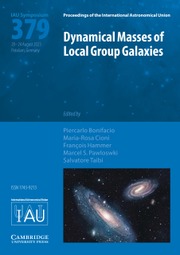No CrossRef data available.
Article contents
Astrophotonics and IR astronomy
Published online by Cambridge University Press: 21 October 2010
Extract
Working in collaboration with industry, the University of Sydney, the Anglo-Australian Observatory and Macquarie University are developing new ‘astrophotonic’ solutions to problems in astronomical instrumentation. A key first step involves overcoming the limitations imposed by multimode (MM) optical fibres that have been used by astronomers for many years to transport or reformat light from the telescope focus to an optical spectrograph. These large-core MM fibres maximise light into an astronomical instrument but at the expense of propagating many unpolarized modes. Until recently, this has deterred the use of more complex in-fibre processing of the light since this is typically limited to single-mode (SM) propagation. A MM to SM converter, known as a ‘photonic lantern’, was first demonstrated by Leon-Saval et al. (2005). If the number of transverse modes equals the number of SM fibres, and if a gradual and adiabatic transition between the MM fiber and the ensemble of SM fibres can be achieved, lossless coupling can take place in either propagation direction. Noordegraaf et al. (2009) demonstrated an efficient 1 x 7 photonic lantern (1 MM input and 7 SM outputs) for the first time.
- Type
- Contributed Papers
- Information
- Proceedings of the International Astronomical Union , Volume 5 , Highlights H15: Highlights of Astronomy , November 2009 , pp. 538
- Copyright
- Copyright © International Astronomical Union 2010


